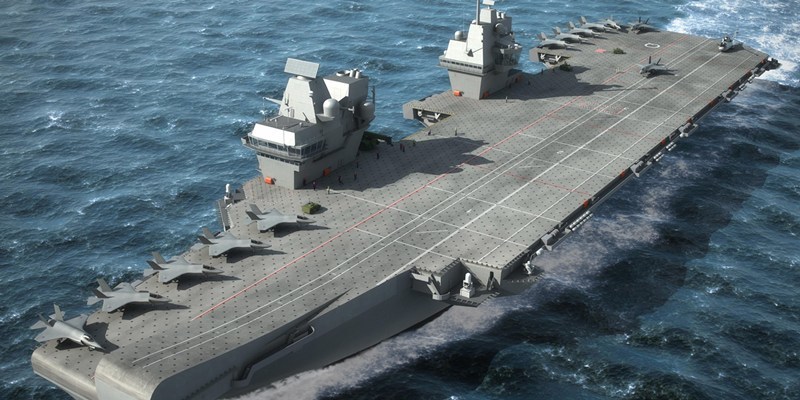A massive section of the UK’s first Queen Elizabeth class aircraft carrier arrived at its new home in Fife over the weekend.
Onlookers on both sides of the Forth were treated to the majestic sight of the 8,000-tonne hull completing its 600-mile journey from BAE Systems’ shipyard in Govan to Babcock’s facilities at Rosyth, where the flagship will be assembled.
While the hard work of piecing together the huge jigsaw that is the HMS Queen Elizabeth still lies ahead, workers watching the mid-section slowly make its way down the Forth on Saturday were able to reflect on what they have accomplished since the first steel was cut on the Clyde over two years ago.
Sean Donaldson, who is the project manager at Babcock, admitted the arrival of Lower Block 03, as it is known, marks a major milestone in the whole carrier project a project which has created and safeguarded hundreds of Fife jobs.
He told The Courier: “It’s a fantastic day and it really is an awesome sight to see it transfer under the bridges.
“It signifies the start of a new phase at Rosyth and it’s the first block to dock down at No 1 Dock, so it basically signals the future here at Rosyth.
“It’s terrific for Fife, for all the people who work here already and all the people who will be working on it over the next 10 years we’ve had over 200 apprentices, graduates and it’s great for everybody.”
He added, “At the end of the day, it’s good to look back at the success people have already had in terms of delivery on time but we’ve got a long way to go.
“It’s a very complex project but we’re obviously working together within the Aircraft Carrier Alliance to make sure it’s a success.”‘Significant phase’At 66 feet (20 metres) high and 207ft (63m) long, Lower Block 03 was gingerly moved out of a hall at the BAE Systems shipyard in Govan, Glasgow, a week ago and began its long trip by sea around the north coast of Scotland.
The mid-section of hull, which is the first part of the HMS Queen Elizabeth to go into the dry dock, travelled more than 600 miles in all and was accompanied by the towing tug Eraclea and the Svitzer Pembroke, which was in the restraint position astern.
The convoy made steady speed all the way and arrived ahead of schedule, slowing down from the average of four knots the ships were travelling at down the busy east coast as they entered the Firth of Forth.
Thankfully the weather was clear as well, meaning people up and down the Fife coast could catch a glimpse of naval history.
With the mid-section now sitting just off Rosyth and the bow sections having been shipped there in April, Commodore Steve Brunton praised those who have worked on the aircraft carriers project.
He said: “The arrival of Lower Block 03 marks a significant point in the construction phase and we’re now able to begin assembling this iconic ship.
“I’m looking forward to the ships coming together, starting with the joining of the blocks here at Rosyth next month.”‘Strong foundations’He added: “With construction now under way on both ships the project goes from strength to strength and I would like to thank all those involved for their hard work and dedication.
“I’m confident the project will build on these strong foundations.”
The team will undertake a complex operation to sink the submersible barge, which will allow the hull section to enter into the water for the first time.
Lower Block 03 will be manoeuvred into position in the dry dock where 350 Govan-based employees will rejoin the block as they work in partnership with employees at Babcock to complete the outfitting and assembly phase.
The 65,000-tonne ship, the first of two new Queen Elizabeth class carriers, will not be finished until 2016 at the earliest, and may not be ready for active service until 2020.
Work on the HMS Prince of Wales has already started at Govan.
Each craft will provide a four-acre military operating base. The vessels will be versatile enough to be used for operations ranging from supporting war efforts to providing humanitarian aid and disaster relief.
